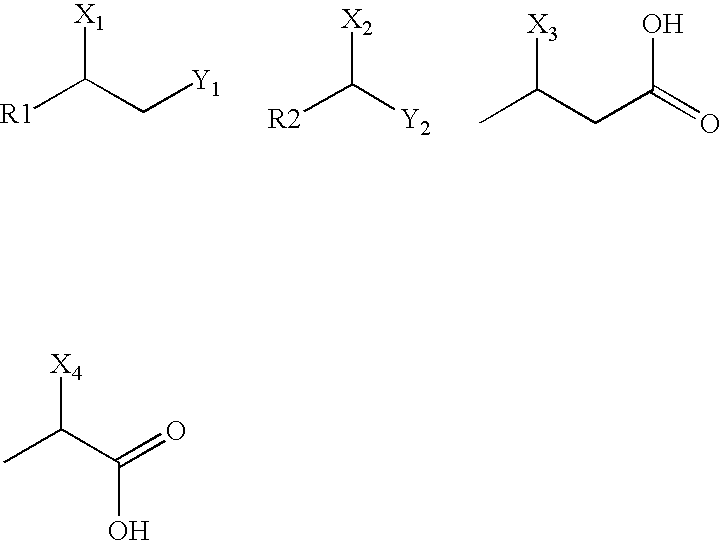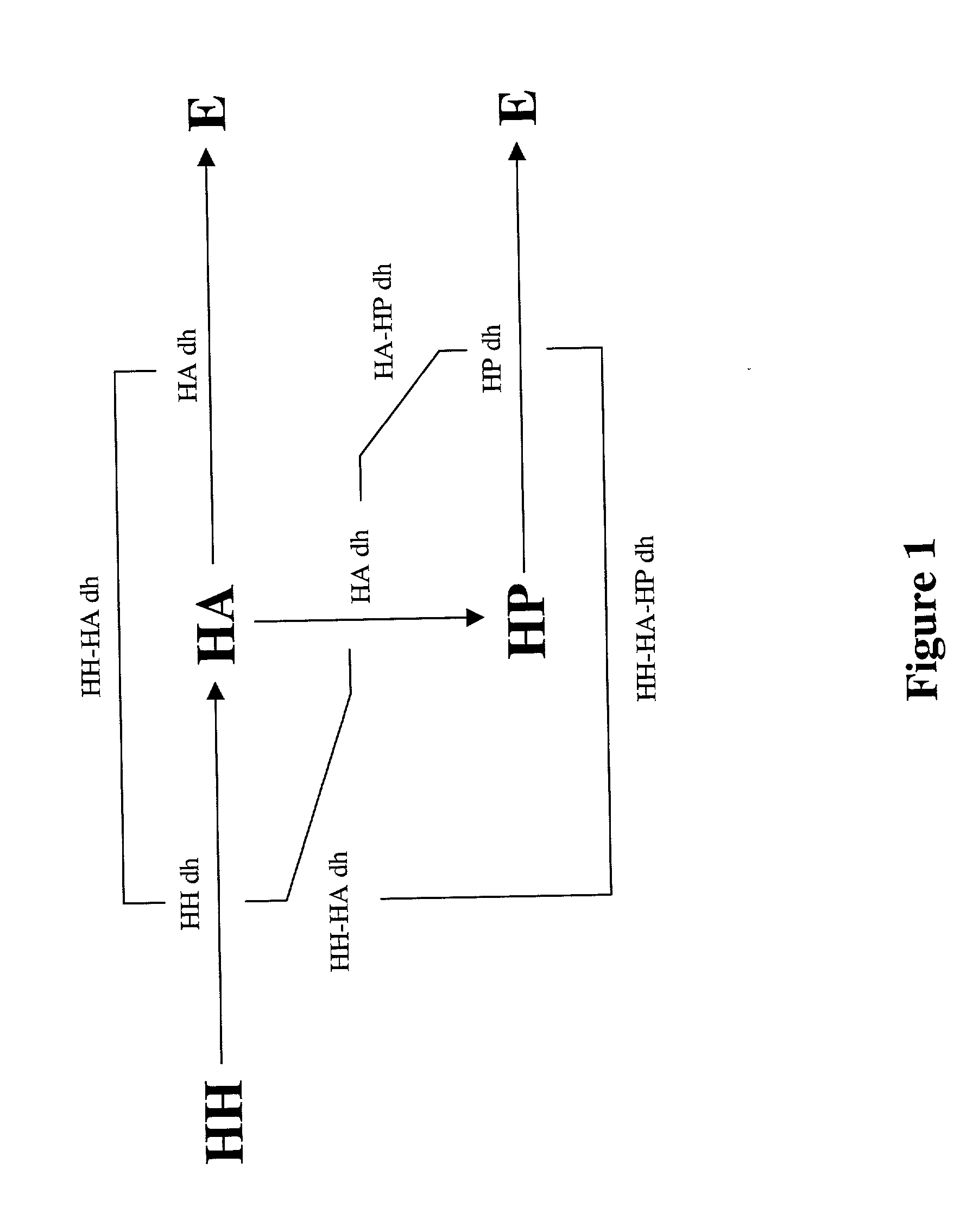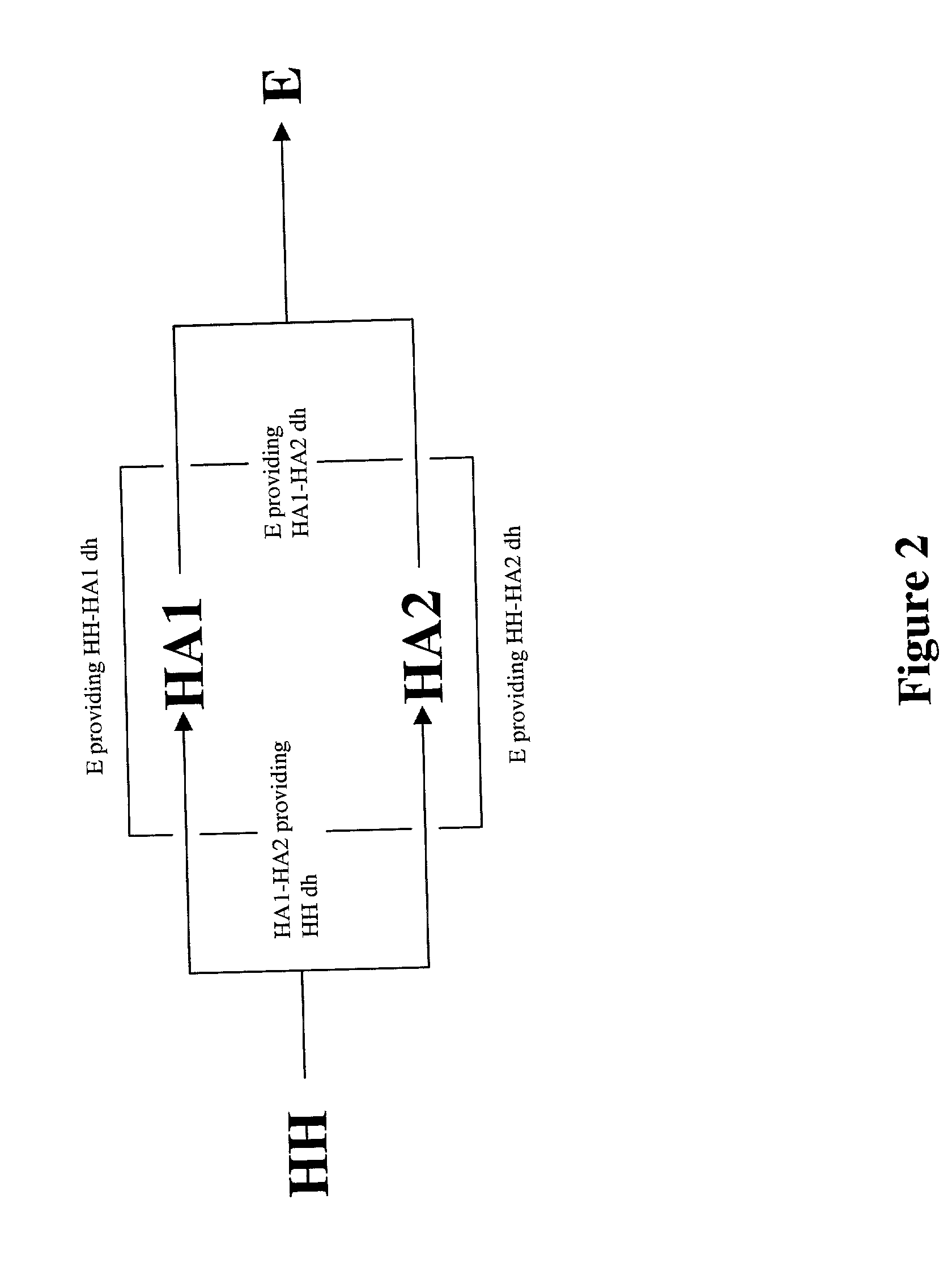Alteration of hydrolase genes and screening of the resulting libraries for the ability to catalyze specific reactions
a technology of hydrolase and gene, applied in the field of reaction pathways, can solve the problems of contaminated soils, sludges, activated carbon, etc., and achieve the effect of reducing the number of incinerations
- Summary
- Abstract
- Description
- Claims
- Application Information
AI Technical Summary
Benefits of technology
Problems solved by technology
Method used
Image
Examples
Embodiment Construction
[0068] Halocarbon and halohydrocarbon compounds are pervasive chemical species found in the environment both as products, or at least by-products, of many naturally occurring pathways and of various synthetic processes, including certain industrial-scale chemical processes. Examples of the latter class include flame retardants, organic solvents, insecticides, fungicides, herbicides, dielectrics, degreasing agents, and intermediates employed in the synthesis of numerous other compounds. Furthermore, many halohydrocarbons are classified as recalcitrant molecules depending upon the number, type, and position of halogen substituents. Fetzner, S. and Lingens, F. (1994) "Bacterial Dehalogenases: Biochemistry, Genetics, and Biotechnological Application," Microbiol. Rev. 58:641-685. In general, the increasing recalcitrance of carbon-halogen bonds directly correlates with the increased electronegativity of the particular substituent and polyhalogenated compounds are often less readily degrad...
PUM
| Property | Measurement | Unit |
|---|---|---|
| Time | aaaaa | aaaaa |
Abstract
Description
Claims
Application Information
 Login to View More
Login to View More - R&D
- Intellectual Property
- Life Sciences
- Materials
- Tech Scout
- Unparalleled Data Quality
- Higher Quality Content
- 60% Fewer Hallucinations
Browse by: Latest US Patents, China's latest patents, Technical Efficacy Thesaurus, Application Domain, Technology Topic, Popular Technical Reports.
© 2025 PatSnap. All rights reserved.Legal|Privacy policy|Modern Slavery Act Transparency Statement|Sitemap|About US| Contact US: help@patsnap.com



